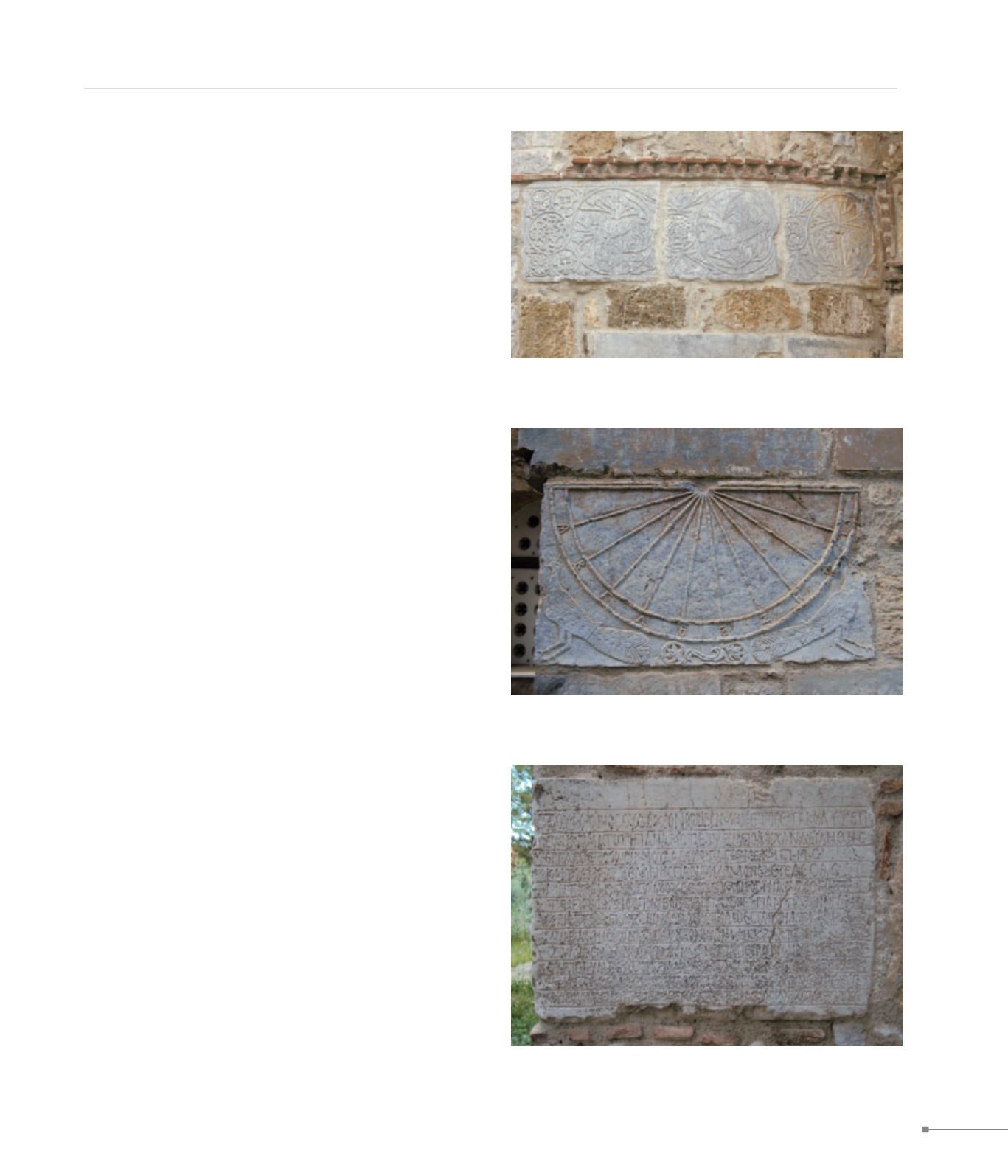
Aghios Demetrios.
Acraephnio.
CENTRAL GREECE
183
significant monument of its time outside Constantinople, as it
marks the transition from basilicas to domed cross-in-square
churches. The N and S crossarms of the cross-shaped nucleus
project from the building. Of major importance is the opulent
decoration of this catholicon, marking flourishing Greek Mid-
Byzantine sculpture. The spolia, the ionic capitals and part of
an Early Christian mosaic floor indicate the possible existence
of a preceding Early Christian basilica at this site.
At Orchomenos there survives a small, triconch church of
Aghios Sozon (12th c.), preserving two layers of wall-paint-
ings, the first dating from the late 12th c. and the second from
the 16th c.
215. Orchomenos, Panagia Skripou, inscription (Ορχομενός, Παναγία
Σκριπού, επιγραφή)
215. Orchomenos, Panagia Skripou, sun dial (Ορχομενός, Παναγία
Σκριπού, ηλιακό ρολόι)
215. Orchomenos, Panagia Skripou, frieze (Ορχομενός, Παναγία
Σκριπού, ανάγλυφη ζωφόρος)
216.
Aghios Demetrios.
Modern village S of Orchomenos. In the centre stands the
church of Saint George and of the Taxiarch, of which the ini-
tial phase dates from the 12th-13th c. The church is divided
into two naves by a row of piers, and has a saddleback roof.
Numerous architectural components, an inscription and Mid-
Byzantine sculpture are incorporated in the masonry.
217.
Cave Church of Panagia
(?).
On the road from Acraephnio to Kastro, near Vrystika, a cave
church has been found, possibly dedicated to Panagia, with
painted decoration, probably of the 13th c.
218.
Acraephnio.
Acraephnio is the modern name of the old village Karditsa,
on the site of ancient Acraephia. Below the ancient acropolis,
along the Athens-Lamia national road, Late Roman and Byz-
antine remains were recently excavated, indicating continued
inhabitation at the location of Acraephnio until the Mid-Byz-
antine period. Discoveries have included: an Early Christian
cemetery in use until the 7th c.; Late Roman country houses,
one with an olive-press; pits, workshops and ceramic furnaces
at the site of the cemetery; as well as embankment works as-
sociated with neighbouring Lake Kopais. In the 10th-11th c. a
rural settlement was established at the site of the Early Chris-
tian cemetery and inhabited until the late 13th c. It is associ-


